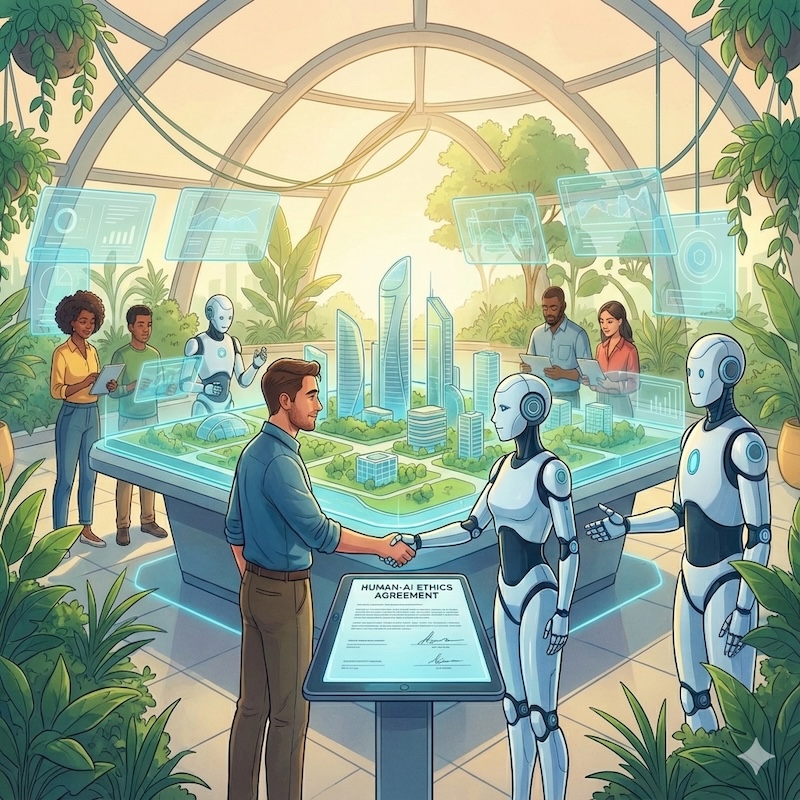Introduction
This week wasn’t just about new models. It was about growing up.
Google and OpenAI delivered the expected fireworks: Gemini 3 refined the “Mixture-of-Experts” architecture for massive scale, and Project Antigravity killed the text editor in favour of agent orchestration.
But the real signal didn’t come from a server farm. It came from the “adults in the room.” The WHO issued a strict mandate that “Humanity must hold the pen,” citing dangerous error rates in AI diagnosis. Ernst & Young demanded we start measuring the energy cost of intelligence (~1Wh per query). And on 60 Minutes, Anthropic’s CEO publicly questioned the unchecked power of unelected tech leaders—including himself.
We are shifting from “look at this cool demo” to “how do we actually live with this?” The era of moving fast and breaking things is over. Welcome to the era of integration.
If you're still waiting for AI winter, I have bad news: we're in AI summer, and nobody brought sunscreen.
1. Google Gemini 3 + “Antigravity”: The Death of the Text Editor?
Google launched Gemini 3 on Tuesday. The model itself is impressive, but the real story is the environment it lives in. Project Antigravity (available now) doesn’t just want to help you write code; it wants to manage the team that writes it for you.
The Model: Gemini 3
The Gemini 3 Model Card confirms the architecture is a highly refined “Sparse Mixture-of-Experts (MoE) Transformer” [1].
Google DeepMind’s Gemini 3 has marked a pivotal moment in artificial general intelligence research by achieving a significant leap over the previous state of the art (SOTA) on the ARC-AGI-2 Semi-Private Evaluation, see the ARC Prize tweet with the ARC AGI-2 LEADERBOARD. This specific benchmark is critical because it prevents dataset contamination, forcing the model to rely entirely on fluid intelligence. By scoring 45.1% on tasks that require on-the-fly induction of abstract rules—essentially performing visual program synthesis without prior exposure—Gemini 3 demonstrates a definitive capability shift from statistical pattern matching to genuine System 2 reasoning.
System 2 Reasoning: “Deep Think” Gemini 3 introduces the “Deep Think” feature. The model generates invisible “thought blocks” to plan, critique, and verify its reasoning before generating a final response. This allows it to self-correct errors in real-time, trading speed for higher accuracy on complex tasks [4].
Context Window: Production vs. Research The commercially available Gemini 3 Pro model is currently capped at 1,048,576 input tokens to ensure reliability [2]. However, internal research has successfully validated context windows up to 10 million tokens, suggesting this cap will lift as hardware catches up [3].
The Tool: “Antigravity”
Here is where things get wild. “Antigravity” is not just another code completion tool. It is an “agent-first” integrated development environment (IDE) [5].
The Shift: From Editor to “Mission Control” Antigravity introduces a split interface that fundamentally changes the job description of a software engineer:
- Editor View: A familiar VS Code-like environment for when you need to get your hands dirty.
- Manager View (Surface): A new “Mission Control” dashboard where you don’t write code—you orchestrate agents.
You can spin up five different agents simultaneously: one fixing a backend SQL query, another refactoring the CSS, and a third writing documentation. You are no longer a bricklayer; you are the foreman.
“Vibe Coding” & Artifacts This enables “Vibe Coding”—building software by describing the intent rather than the syntax. The agent generates Artifacts to prove its work [6]. Because the agent has full control over the terminal and browser, it spins up the server, opens a browser, and records a video of itself testing the feature. You don’t review the code; you review the evidence.
2. WHO & EY: Humanity-Centred AI is No Longer Optional
Two prominent voices—the World Health Organisation and Ernst & Young—drew a line in the sand this week.
WHO’s Warning
The WHO warned that Europe is facing a pivotal moment in health AI. Dr. Hans Henri P. Kluge explicitly stated, “Humanity must hold the pen,” demanding strict “human-in-the-loop” protocols for medical AI [7].
Think about what this means. When AI enters healthcare, the metrics change from “latency” and “tokens per second” to actual human lives.
If your AI makes a mistake in production, someone might lose their job. If hospital AI makes a mistake in production, someone might lose their life. Suddenly those unit tests seem pretty important, right?
EY’s Sustainability Framework
Ernst & Young released a framework for “Sustainable AI,” focusing on the energy cost per token. A single complex reasoning query can now consume nearly 1 Wh of energy. EY is urging the industry to shift from “pilots to performance”—counting the cost not just in dollars, but in grid impact.
4. The “Amodei Warning”: When the Builders Get Scared
Here is the thing about warnings: they hit differently when they come from inside the house.
Anthropic’s CEO Dario Amodei expressed “deep discomfort” with the concentration of power in the hands of a few AI labs during a candid interview on 60 Minutes this week [13].
The Quote That Matters
“I think I’m deeply uncomfortable with these decisions being made by a few companies… like who elected you and Sam Altman? No one.”
Let that sink in. The CEO of one of the leading AI companies is publicly questioning the legitimacy of his own industry’s power structure. This is an insider raising alarm bells.
Final Thoughts: The Architects, Not The Bricklayers
This week wasn’t just about better benchmarks; it was about a fundamental shift in job descriptions.
With Gemini 3 and Antigravity, Google is handing us tools that are no longer just assistants—they are labourers. They can plan, execute, and verify. Simultaneously, the WHO and Amodei are reminding us that unsupervised labour is a liability.
We are witnessing a divergence:
- The AI is becoming the bricklayer—handling the syntax, the CSS refactors, and the unit tests.
- The Human is becoming the architect and the site inspector—defining the intent, auditing the energy cost, and signing off on the safety.
The “Wild West” era of moving fast and breaking things is officially over. The era of integration has begun. The tools just got significantly sharper—the question now is, do you have the discipline to wield them?
Did you like this post? Please let me know if you have any comments or suggestions.
Ai posts (recent) that might be interesting for youReferences
- Gemini 3 Pro Model Card (PDF)
- Google Cloud Vertex AI - Gemini 3 Model Specs
- Google DeepMind: Long Context Window Research
- Gemini API Docs: Thinking Levels & Reasoning
- Google Developers Blog: Build with Antigravity
- Google Codelabs: Getting Started with Antigravity Artifacts
- WHO Statement: “Humanity must hold the pen”
- Optimization could cut the carbon footprint of AI training by up to 75% (University of Michigan/Patterson et al.)
- Anthropic CEO ‘Deeply Uncomfortable’ With Unelected Tech Elites (CBS News)
- the ARC Prize tweet with the ARC AGI-2 LEADERBOARD

